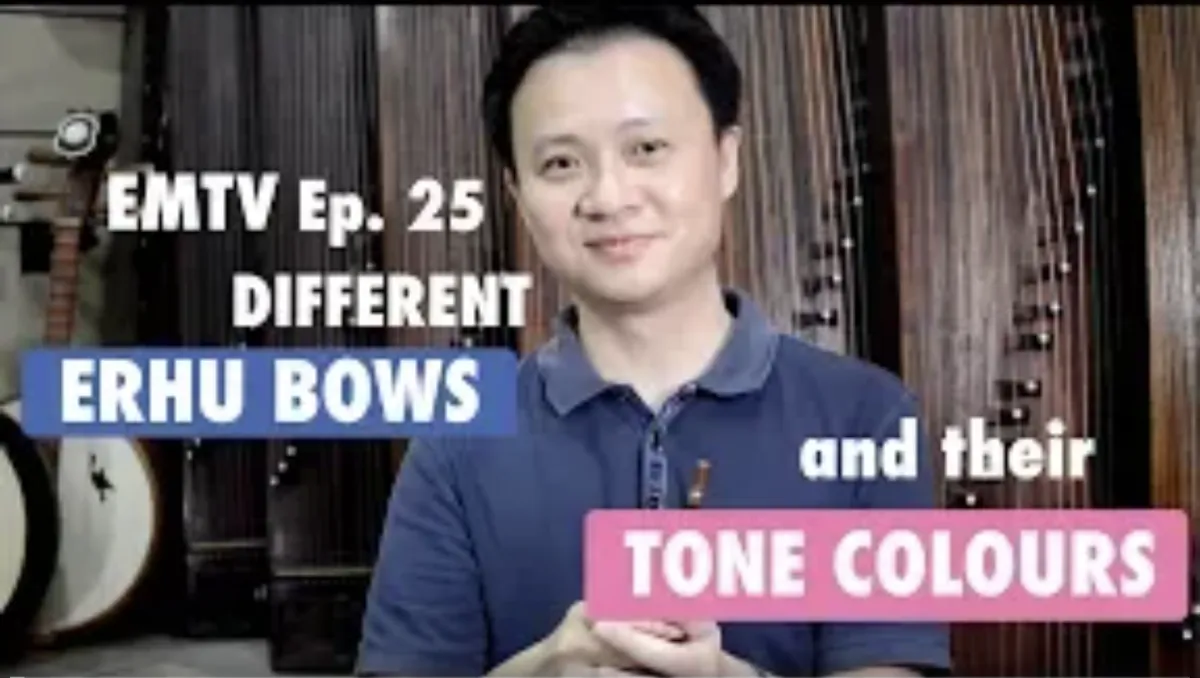Discover the latest in...
Erhu, Gaohu, Zhonghu

Erhu Bows and their Tone Color
Erhu Bows: Unveiling the Magic Behind the Music
Ever wondered what makes one Erhu sound different from another? A big part of it comes down to the bow, the unsung hero that shapes the instrument's voice. But did you know there are different types of Erhu bows, each with its own unique qualities? In this blogpost, we'll dive deep to explore the fascinating world of Shanghai and Beijing Erhu bows.
Difference between Shanghai Erhu bows and Beijing Erhu bows
The first key difference lies in the bamboo itself. Shanghai bows typically use bamboo from Jiangxi province, known for its flexibility. This translates to a smoother, more nuanced playing experience. On the other hand, Beijing bows favor bamboo from Hebei province, which is naturally stiffer. This translates to a more powerful, robust sound.
Another major distinction lies in the frog (the part you hold) of the bow. The Shanghai bow requires you to twist out the entire end pin to detach the horsehair to install or remove the bow from the Erhu. In contrast, the Beijing bow features a handy quick release catch that allows you to easily unhook and reattach the horsehair to fit it on your Erhu
The Eloquent Erhu Bows on our Display
Now, let's meet the stars of our show – a selection of Erhu bows that we have in our webstore:
1. Shanghai Bow (Starter Grade)
Description: This bow stands as an entry point, shorter in length with less bow hair.
Opinion: There is a distinct thinness in its tone, deviating from the typical rich Erhu sound. The shorter length poses challenges, especially in playing slow, expressive passages.
Conclusion: A decent starting point but may leave advanced players wanting more depth and control.
Description: Stepping up, we encounter the Professional Shanghai Bow, slightly longer and a standard choice.
Opinion: Here, we find a fuller, more resonant tone. It has enhanced control, attributed to thicker bamboo and added length. This bow offers a broader range of expression, particularly beneficial for nuanced performances.
Conclusion: Highly recommended for its balanced tone, enhanced control, and versatility across musical styles.
3. Beijing Bow by Wang Xiao Di (WXD)
Description: Transitioning to the Beijing Bow by Wang Xiao Di, we find a blend of tradition and comfort.
Opinion: Despite a thinner sound profile compared to the Shanghai counterpart, its unique feature—a plate that flattens horsehair, results in a more penetrating, powerful sound. Its comfort and ease of use make it a contender in the Erhu bow realm.
Conclusion: A niche option for those craving a unique, penetrating sound, coupled with comfort during extended playing sessions.
4. Beijing Bow by LHG (Li Huai Gang)
Description: We delve into the preferred choice of professionals, the Beijing Bow by LHG.
Opinion: This bow is a fusion of the best qualities from the Shanghai Professional and Wang Xiao Di bows. With its harder bamboo, it offers increased firepower, alongside a smooth, luxurious tone. Its elegant design and simplicity make it a favorite among seasoned Erhu players.
Conclusion: The pinnacle of Erhu bow craftsmanship, blending power, elegance, and a luxurious tone. An investment for serious musicians seeking the best.
Description: Making a late entry our arsenal of bows, this is the bow that comes together with high end Xu Shi Erhus.
Opinion: This bow is similar to the above LHG bow, but has a stiffer and thicker bamboo. The thicker bamboo offers added stability and control when playing emotive and slow passages. Fitted with premium horsetail hair, it gives an elegant and luxurious tone like the LHG bow.
Conclusion: Top notch craftmanship, offering added control especially when playing traditional and slow pieces .
Elevating Your Erhu Experience
In conclusion, the Erhu bows showcased in this demonstration unveil a spectrum of tones, from the ethereal to the powerful. Whether you're a novice seeking your first bow or a seasoned player aiming to enhance your performance, understanding these nuances can elevate your Erhu journey.
For those eager to explore further or seeking personalized advice on selecting the perfect bow, don't hesitate to reach out to us. Your melodic odyssey awaits!
Here's a video talking about the bows above:
Unlocking the Secrets of Chinese Instruments (For Beginners & Beyond)
Welcome to the Eason Music blog & podcast, your gateway to the captivating world of Chinese musical instruments. From the enchanting melodies of the yangqin to the haunting tones of the erhu, join us as we share tips, tricks, and insights to enhance your journey into the realm of Chinese music. Whether you're a seasoned player or a curious beginner, uncover the secrets, techniques, and stories behind these timeless instruments with us. Welcome to the harmony of Eason Music.

